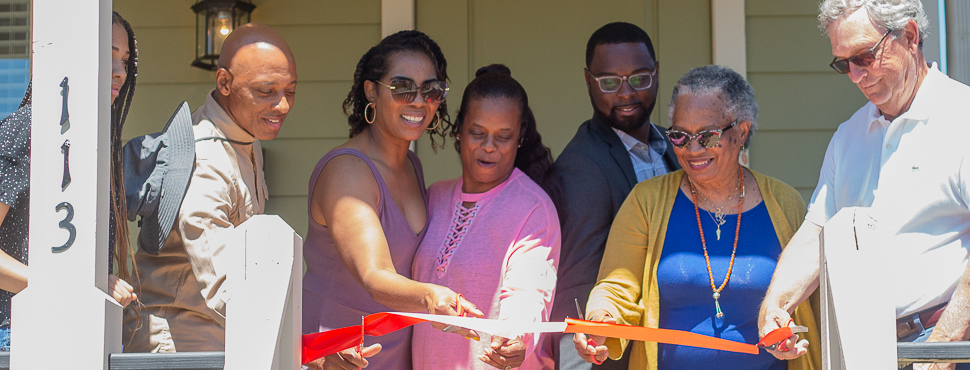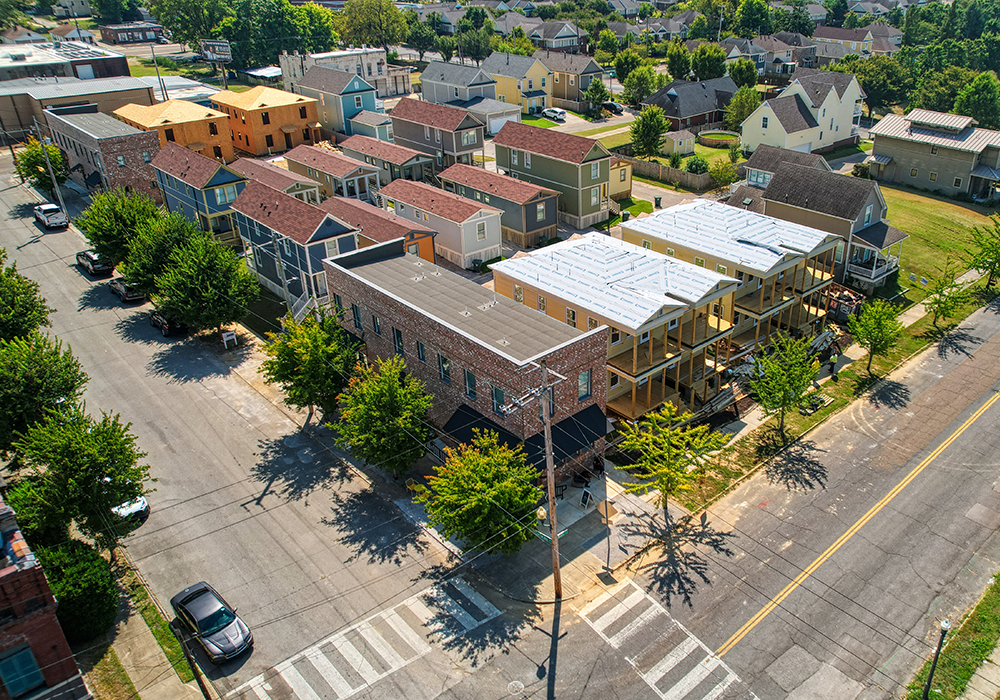New White Paper: Creating More Housing Doesn't End With Zoning Reform

While great strides have been made in zoning reform across the U.S., some communities are still seeing little or stalled development of missing middle housing due to the cost-restrictive nature of their own building codes and regulations. John Zeanah, AICP, chief of development and infrastructure in Memphis, Tennessee, is all too familiar with this reality.
To help provide planners with a way to solve some of these challenges, Zeanah penned "Beyond Zoning: Hidden Code Barriers to Middle-Scale Housing," a free white paper published by the Center for Building in North America in early September.
"I wanted to write something that would get planners savvy on the basics about all these different construction code requirements that could be weighing down the delivery of missing middle in your communities," he says.
Restrictive Codes Slow Housing Growth

John Zeanah, AICP. Photo courtesy of Kaitlyn Stoddard.
This past May, Zeanah was appointed to a new role by Mayor Paul Young to align oversight of four departments: planning and development; engineering; housing and community development; and public works. But in his former position as director of planning, Zeanah led Memphis in developing its first comprehensive plan in 40 years, which won the American Planning Association's Daniel Burnham Award for a Comprehensive Plan in 2020.
Going into that process, Zeanah says he knew the city needed to shift focus when it came to housing, and one issue that stuck out was the lack of missing middle housing. A big driver of that is due to restrictive building and fire codes, stormwater regulations, and utility requirements. For these types of projects to pencil out financially for developers, "code requirements have to be proportional to the number of units," Zeanah says.
To better understand the situation, Zeanah began reaching out to local builders. "It became abundantly clear to me that if we were going to build missing middle, zoning wasn't going to be enough," he says. "Especially in a market like ours, where margins are already very thin, we were going to have to do whatever we could to figure out how to get down the cost of construction."
In "Beyond Zoning," Zeanah writes that restrictive codes can make missing middle housing "infeasible to build," because "standards were written mainly with either single-family homes or much larger buildings in mind." This happens, oftentimes, when a project goes from two units to three — classifying the building as an apartment and making it subject to the International Building Code (IBC) with more extensive requirements. Requirements like expensive fire sprinklers, commercial-grade alarm systems, and stormwater management are more suited to a 40-unit building than a three-unit building.

An aerial shot of Malone Park Commons, a 35-unit missing middle housing development of one- to two-bedroom cottages and apartments in Memphis, Tennessee. Photo courtesy of Andre D. Jones.
The white paper uses Malone Park Commons — a 35-unit multifamily development of one- and two-bedroom cottages and apartments in Memphis that had been repeatedly blocked by the city's building, fire, and utility regulations — as a case study into how code changes helped relieve some of the burden on the developer and get the project off the ground. Under the old rules, the type of housing that was proposed for the site would trigger more stringent IBC regulations. "For small projects, sprinklers can be a make-or-break factor," Zeanah writes. "Sprinkler installation alone can cost tens of thousands of dollars for a fourplex."
The IBC rules also dictate adding in backflow preventers estimated at $3,000 to $5,000 per building; professionally designed plans; and water infrastructure and utility fees that the project developer deemed "unexpected, unscalable, and financially destabilizing."
Memphis planners first tried to get a local amendment to the city's building codes to allow up to six units to be regulated by the International Residential Code (IRC). But that ran afoul of the state fire marshal, so they worked to get a state law passed in 2024 that permits two-hour-rated separations between units as opposed to installing fire sprinklers for residential buildings with up to four units. Since that change, Memphis planners have continued their efforts, now working in partnership with the state fire marshal, to prepare other changes such as allowing 13D sprinklers — commonly found in one- or two-unit residences — for up to eight-unit buildings instead of the 13R sprinklers typically found in higher density, larger buildings.
This — along with less expensive fire alarm alternatives and flexibility on standards for egress, structural loads, and design requirements — is estimated to save roughly eight to 10 percent in construction costs for three- to eight-unit buildings, Zeanah says.
Clearing the Way for Multifamily Housing
"Beyond Zoning" also delves into other challenges tied to burdensome code requirements, while also including over a dozen action steps planners can take to clear the path for small multifamily housing developments in their own communities. These include forming an interdepartmental task force and developing a small multifamily building code amendment. Another suggestion is for cities to find their own version of Malone Park Commons.
Beyond Use Zoning: The Role of Deregulation in Housing Equity

Learn how Memphis and other cities are going beyond use zoning to advance goals of housing equity by reforming codes and policies in this issue of Zoning Practice, also written by John Zeanah, AICP.
"I learned so much just by making friends with the developer of that project and spending as much time as I could trying to understand what he was going through to try to get a missing middle project done in his community," Zeanah says. "He also helped me to explain to lawmakers and code officials why the changes we were proposing were so important for someone like him who was trying to deliver this.
"Ultimately, if we want to see a different type of construction that hasn't been built in our communities in many years get built, we've got to understand the economics of how that happens."
Top image: Memphis residents and developer Andre D. Jones (far left) celebrate the opening of Malone Park Commons, a missing middle housing development made possible by the efforts of planning staff to help reduce some of the burdensome code requirements that were previously in place. Photo courtesy of Andre D. Jones.
ABOUT THE AUTHOR


